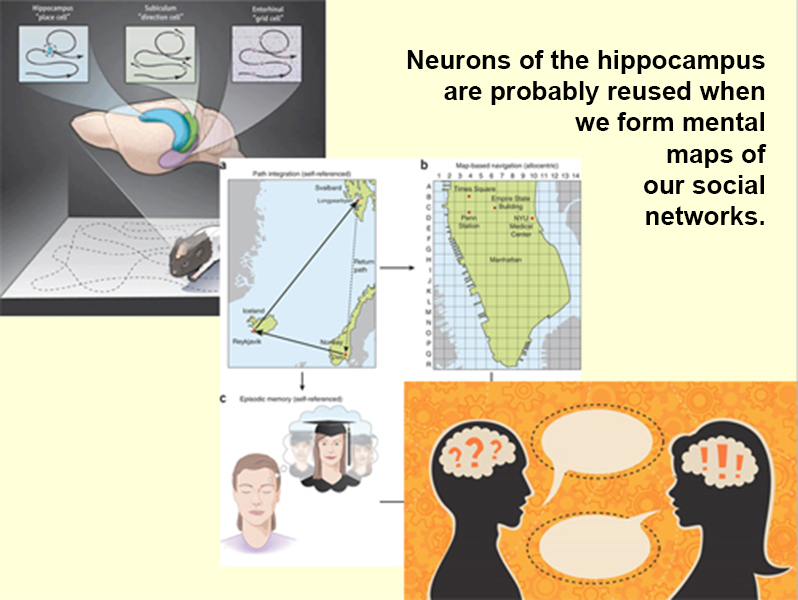Tuesday, 29 October 2024
Neuronal recycling

The concept of neuronal recycling is based on the principle that the process of evolution never starts from zero, but instead always builds on whatever has come before. In this way, the brain can develop complex new functions far more efficiently than if it had had to create them from scratch. It would be surprising if the brain didn’t take advantage of this principle, and in fact, many neuroscience researchers have developed theories and models that are based on it. Thus, brain circuits that evolved earlier—sensorimotor circuits, for example—are thought to contribute to the development of new brain functions, such as language, while still preserving their original functions as well. (more…)
Evolution and the Brain | Comments Closed
Tuesday, 8 October 2024
The “forest troop” : a tale of baboons about our world ?
Primatologist Robert Sapolsky studied a troop of baboons in Kenya for many years. Around the mid-1980s, the dominant males in this troop began raiding a garbage dump near a tourist lodge, where they ate meat that was infected with tuberculosis and ended up killing them. Because the most aggressive males in the troop had thus been killed off, the troop as a whole became more peaceful. There was still a hierarchy, but it had become much less rigid. This new pattern persisted even 10 to 20 years later, when all of the males then in the troop had been born in different ones (male baboons leave their natal troops and join others once they reach reproductive age). These males born in other troops had no need to be so aggressive in this especially peaceful baboon culture (until then, ethologists had always described baboons as especially aggressive animals). I wonder what might happen if all of the most aggressive, dominant men running the world’s empires today were suddenly to die from, say, eating contaminated caviar. You may laugh, but this natural experiment with baboons raises many questions about the supposedly unavoidable aspects of human societies.
Emotions and the Brain, Mental Disorders | Comments Closed








